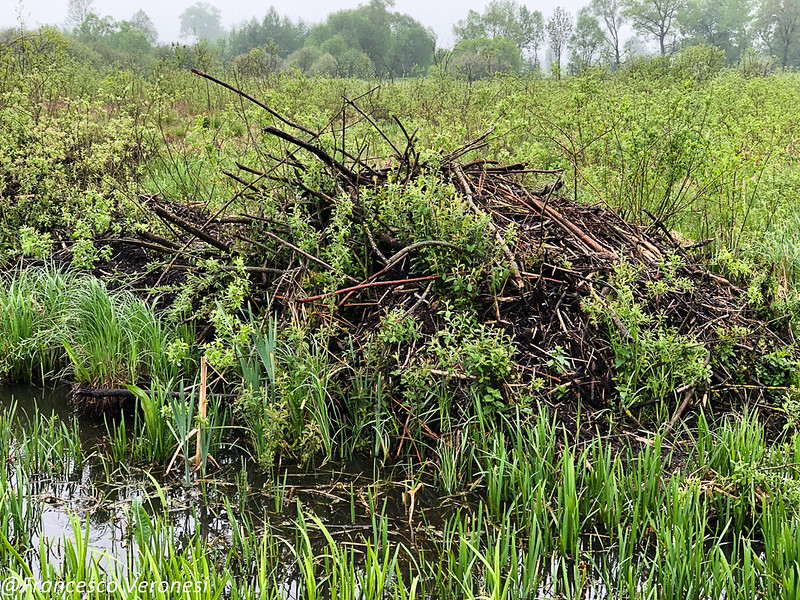Researchers in Poland have found another reason to love beavers: They benefit wintering birds.
The rodents, once maligned as destructive pests, have been getting a lot of positive press lately. And for good reason. Beavers are ecosystem engineers. As they gather trees and dam waterways, they create wetlands, increase soil moisture, and allow more light to reach the ground. That drives the growth of herbaceous and shrubby vegetation, which benefits numerous animals.
Bats, who enjoy the buffet of insects found along beaver ponds, are among the beneficiaries. So too are butterflies who come for the diversity of flowering plants in the meadows beavers create.
Some previous research has found that this helping hand also extends to birds. For example, a 2008 study in the western United States showed that the vegetation that grows along beaver-influenced streams provided needed habitat for migratory songbirds, many of whom are in decline.

The new study published in the journal Forest Ecology and Management found further evidence by focusing on birds in winter. The researchers looked at assemblages of wintering birds on 65 beaver sites and 65 reference sites in a range of temperate forest habitat across Poland. Winter can be a challenging time for birds in that environment, as they need to reduce energy expenditures in the cold weather and find habitat that has high-quality food and roosting sites.
Wintering birds, it turns out, find those qualities near beaver habitat.
The researchers found a greater abundance of birds and more species richness near areas where beavers had modified waterways. Both were highest closest to the shores of beaver ponds.
One of the reasons that birds are attracted to these areas in winter has to do with warmth: The open tree canopy caused by flooding and tree diebacks lets in more sun, and ice-free beaver ponds can release heat, previous research has found.
The changes beavers make to the landscape also provide for different kinds of birds. Standing dead wood caused by flooding is sought after by woodpeckers, and then by secondary cavity nesters that follow. The diversity of plants that grow in beaver areas produce fruits and attract insects — and therefore frugivorous and insectivorous birds.
“All beaver-induced modifications of the existing habitat may have influence on bird assemblage,” says Michal Ciach, a study co-author and a professor in the department of Forest Biodiversity at the University of Agriculture in Krakow, Poland. “But different bird species may rely on different habitat traits that emerge due to beaver activity. It’s like a supermarket.”
Just how far into the forest do beavers’ benefits extend?
While the study found that the number of bird species and the number of individuals were significantly higher in the study areas closest to beaver ponds, “for some species this tendency also held in forests growing at some distance from beaver wetlands,” the researchers wrote.

Those instances, though, weren’t statistically significant. But Ciach says beaver effects can be far-reaching in other cases. He’s the coauthor of a study published last year that found a greater number of wintering mammal species near beaver ponds, which extended nearly 200 feet from the edges of ponds.
And it’s likely that what’s good for birds may be good for many other species, too.
“Birds are commonly considered a good indicator of biodiversity,” he says. “If they positively respond to beaver presence, one may expect that such patterns will be followed by other groups of organisms. At this moment we are sure it works for wintering mammals. Other groups of organisms need investigation, but I’m quite sure many other organisms will do the same.”
The growing research about beavers suggests a greater need to protect their habitat and understand their important role in the ecosystem.
“Beaver sites should be treated as small nature reserves,” says Ciach. “The beaver, like no other species, is our ally in stopping the decline of biodiversity.”
![]()


